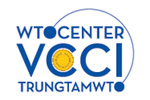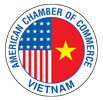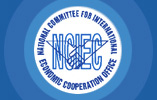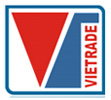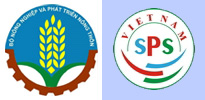
Talking to reporters of Customs News, Tran Le Huy, the Vice President and General Secretary of Binh Dinh Timber and Forest Products Association emphasised that with FTAs, especially new generation ones, tariff preferences are very important. However, intangible values like brand name, trust and spread are even greater, surpassing the calculation of how much a percentage of export value increases or decreases.
How do you evaluate the positive impact of FTAs, especially new generation FTAs such as the CPTPP, EVFTA, UKVFTA on Vietnam's wood processing and export industry?
- I think FTAs have a pretty big positive effect. When seeing FTAs like "buddies", things will be easier. Customers in markets that have signed FTAs in Vietnam will know about Vietnamese goods and have more demand for them and since then, the importers also pay more attention to the Vietnamese market.
In terms of tariffs, currently the exports of wood and wood products to many markets are already low. Usually, developed countries have a global tariff support system for developing countries like Vietnam, for example the general preferential tariff mechanism (GSP) that the EU is applying. However, if a country does rise, for example, if per capita income increases to a certain extent, the importing country will remove tax incentives, for example the EU removes the GSP. A few years ago, Malaysia, China and India were raised by the EU and removed the GSP application, leading to the loss of competitiveness with Vietnamese products in the EU market. The tax rate of only 3% or 5% is already very large.
However, when Vietnam signs new generation FTAs, the tax will be almost 0% or reduced to 0% within four or six years, which will create many advantages, helping Vietnamese goods compete with competitors with the same item. Although Vietnam's economic growth has grown, FTAs are still committed to maintaining tax rates. That is greatly advantageous.
Some have said that, in addition to tariffs, brand values, trust or spillover effects in the export market, are other important factors that FTAs bring to the wood processing and export industry. What is your opinion?
- If assessing how much of a percentage the EVFTA or new generation FTAs in general helps the export of wood and wood products grow, it should be put in context. At the present time, when exporting is affected by many factors such as Covid-19, the "weighing, measuring, counting" specific numbers are difficult to determine exactly. I think that intangible values such as brand value, trust and spread are much greater than how many percent increase or decrease in export value.
For example, Vietnam is accelerating exports of wooden furniture to the US. Vietnam does not have an FTA with the US, but why are exports to this market growing? This is because the Government has committed to transparency in the supply chain, supporting the supply chain, ensuring product security and safety. Besides, as Vietnam has joined FTAs with markets, the US side also consulted. In this case, Vietnam is also recognised by potential partners, creating a wider and larger spillover effect.
How do you evaluate the competitiveness of Vietnamese wood in major export markets, especially markets Vietnam has signed with FTA?
- It cannot be said that Vietnamese wood products are of high or low quality, but I want to mention the product quality perspective according to customer requirements. At that price, the customer makes the quality requirement and the manufacturer responds.
For example, branded, well-designed and high priced Italian goods. For Vietnamese goods that require lower prices, there are no other factors like the high-end market. The export value of Vietnamese wooden furniture has increased, showing consumers are more interested in Vietnamese wood products. Importing groups also pay a lot attention to Vietnam's export enterprises.
Markets and export partners are very diverse and plentiful. There are large partner firms investing in Vietnam, then looking for satellites to provide products for them or investing in factories in Vietnam. However, there are also many Vietnamese enterprises to actively design products, markets, raw materials.
For development, there are firms that sell both brand name and design; But there are also businesses that only sell products and the whole market is very diversified, not the Vietnamese wood industry only produces and outsourcing. Vietnam is currently the 5th and 6th largest country in the world for wood furniture export value. Countries competing with Vietnam such as Indonesia and Malaysia appreciate Vietnam very highly. Export value is increasing, while technology, scale and quality of products and enterprises are increasingly upgraded.
Source: VCN
Key words: wood processing, export industry, FTAs, export markets, wood furniture, tariff preferences, brand name, values






